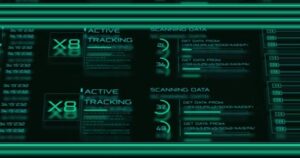
In an era soon to be dominated by Artificial Intelligence (AI), the seamless integration of machine-generated content into our daily lives raises concerns about the need to distinguish between authentic and AI-generated material.
As AI continues to advance, we in the security industry must develop robust detection methods to preserve the accuracy and integrity of data, as this data is required to identify and respond to threats in the physical world. This is especially true of our continually advancing reliance on technology like video surveillance systems, VoIP intercom and phone systems, and protective intelligence used in security operations centers.
Understanding how to identify AI-generated content is crucial for maintaining trust and accuracy in an ever-evolving digital landscape. By staying vigilant and adapting detection strategies to keep pace with AI advancements, individuals and organisations can contribute to the ongoing battle against misinformation and deceptive practices, fostering a digital landscape built on trust and authenticity.
While the security industry progresses to embrace this technology in various capacities, let’s delve into some strategies that we mere mortals can use to detect AI’s presence in different domains, such as images, audio, and text.
How to Detect AI in Images
Noise Analysis: AI-generated images often carry subtle patterns or artefacts that deviate from those present in naturally captured visuals. By scrutinising noise patterns, and hard-to-generate items like hands, feet, logos, and background text in images, you can unveil the telltale signs of images crafted by AI algorithms. This nuanced examination aids in distinguishing between authentic and machine-generated visuals.
Examine the metadata: AI-generated images may lack the typical metadata markers associated with photos taken by traditional cameras. Anomalies in metadata such as geolocation, camera model, lens settings, etc., can serve as a red flag, prompting further investigation into the image’s authenticity.
Reverse image search: Employing reverse image search tools is a valuable technique to ascertain the origin of an image. AI-generated images often lack real-world counterparts, making them stand out in search results. This method is particularly effective in identifying instances where AI has been employed in the creation or manipulation of visual content.
How to Detect AI in Audio
Spectral analysis: AI-generated audio frequently exhibits specific spectral patterns or anomalies not found in naturally occurring sounds. Spectrogram analysis can unveil these hidden patterns, assisting in the identification of AI-generated audio content. This analytical approach is vital for differentiating between human and machine-generated sounds.
If you don’t have a spectrum analyzer handy, try these two human-capable detection methods. First, listen for words or phrases that get repeated – AI-generated content will use the same cadence, rhythm, and pronunciation, giving you a clue to its origin. Second, if you are having a dialog with AI, it does not know how to respond to bizarre questions – so if you get a call and it sounds like your family member asking for help and money, ask the AI for a code word like “what am I holding in between the toes of my left foot?” While the AI will have no idea how to respond, a family member will give you the secret code word or at least ask what the heck you are talking about.
Voiceprint analysis: Analysing the voiceprint of a speaker can be instrumental in identifying AI-generated voices. AI often struggles to replicate the nuanced characteristics present in human speech, and voiceprint analysis can reveal discrepancies that may not be perceptible to the human ear.
Linguistic analysis: AI-generated speech may lack the natural flow and coherence found in human communication. Identifying unnatural syntax, grammar, or contextual inconsistencies can provide valuable clues in determining the authenticity of audio content.
How to Detect AI in Text
Linguistic anomalies: AI models may struggle with nuanced language use, so scrutinize for unnatural word choices, awkward sentence structures, or inconsistencies. Thorough linguistic analysis is crucial for revealing subtle signs of AI involvement in machine-generated text.
Stylometric analysis: AI models may exhibit consistent stylistic features that differ from the diversity found in human-generated content. Stylometric analysis, which focuses on patterns in writing style, is a powerful tool for detecting these subtle variations.
Contextual inconsistency: AI-generated text may struggle to maintain context throughout a piece of writing. Abrupt changes in tone, topic, or inconsistency in narrative flow can reveal instances where AI has been employed in the creation of textual content.
Cross-Domain Detection
Multi-modal Analysis: Combining techniques from image, audio, and text analysis creates a comprehensive approach to detecting AI across various domains. Cross-referencing results from different modalities can enhance the accuracy of AI detection and provide a more robust defense against machine-generated content.
Machine learning classifiers: Training machine learning classifiers using labelled datasets is an effective approach to distinguishing between AI-generated and human-created content. This method leverages the power of algorithms to identify subtle patterns across images, audio, and text, contributing to a more sophisticated and adaptive detection system.











